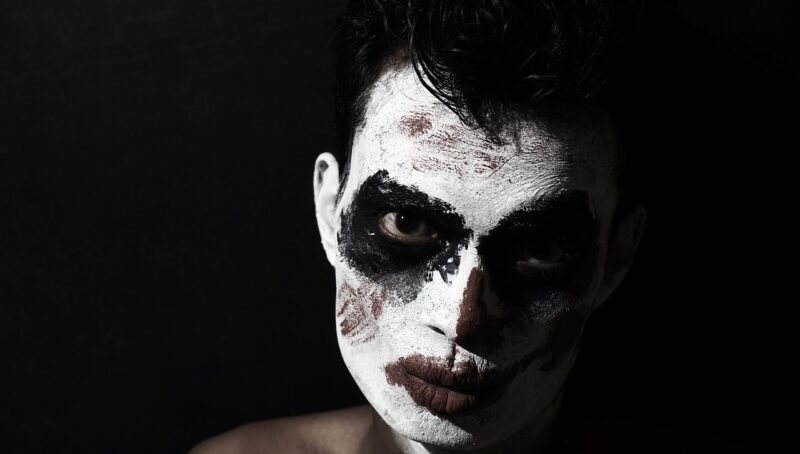The Psychology of Joker: Understanding Batman’s Greatest Enemy
November 14, 2024

The Joker, one of the most iconic villains in the world of comic books and films, has fascinated audiences for decades. His chaotic nature, alongside his complex relationship with Batman, raises critical psychological questions. In this article, we will explore the intricate psychology of the Joker, analyzing his behavior, motivations, and the impact of his actions on both Batman and society. By understanding the nuances of his character, we can gain insight into the darker corners of the human mind, making the Joker not just a fantastical villain but a profound psychological study.
1. The Origins of the Joker: A Psychological Perspective
The Joker’s origins vary across different interpretations, but a common thread is his traumatic past. Often depicted as an individual who has suffered immense physical and psychological pain, the Joker embodies the outcome of unresolved trauma. For instance, in Alan Moore’s classic graphic novel **”The Killing Joke,”** we learn that his backstory involves a failed career, the loss of a loved one, and a series of unfortunate events that culminate in his transformation into the Clown Prince of Crime.
These formative experiences, combined with a lack of support and mental health resources, highlight how trauma can distort one’s reality. The Joker represents the potential consequences of unchecked psychological wounds—turning individuals into agents of chaos.
2. The Joker’s Antisocial Personality Traits
The Joker clearly exhibits traits of Antisocial Personality Disorder (ASPD), characterized by a persistent pattern of disregard for the rights of others, emotional detachment, and impulsive behavior. His penchant for violence and cruelty speaks to a lack of empathy, which is one of the foremost traits associated with ASPD.
Characteristics of the Joker that align with this disorder include:
- Manipulativeness: The Joker is highly manipulative, frequently using others as pawns in his elaborate schemes.
- Impulsivity: His actions are often spontaneous and unpredictable, reflecting a lack of forethought regarding consequences.
- Emotional detachment: The Joker often expresses happiness in causing suffering, indicating a severe disconnect from normal emotional responses.
Understanding these traits can provide insight into not only the Joker’s character but also the broader implications of ASPD in real-world individuals.
3. The Dark Triad: Narcissism, Machiavellianism, and Psychopathy
In addition to ASPD, the Joker embodies elements of the Dark Triad—narcissism, Machiavellianism, and psychopathy. These traits are often found in individuals who pursue their selfish interests at the expense of others.
– **Narcissism:** The Joker sees himself as superior, often referring to himself as the ultimate jester of chaos. He seeks validation through the havoc he wreaks.
– **Machiavellianism:** With a cunning aptitude, the Joker manipulates others to achieve his chaotic aims, often using elaborate schemes to ensnare both friends and foes alike.
– **Psychopathy:** The Joker’s complete lack of remorse or guilt for his actions exemplifies psychopathic traits—the ultimate disregard for the feelings of others.
Together, these traits create a multifaceted character that makes the Joker both terrifying and fascinating.
4. The Joker vs. Batman: A Psychological Showdown
The dynamic between the Joker and Batman showcases a unique psychological rivalry, portraying the dichotomy of order and chaos. Batman represents justice, discipline, and the quest for redemption, while the Joker embodies anarchy, nihilism, and uncontrollable impulses.
This rivalry is not merely one of good versus evil but rather a complex relationship where each character reflects the other’s deep-seated fears and desires. Batman’s fear of becoming like the Joker fuels his relentless pursuit to impose order on Gotham City. Conversely, the Joker sees Batman as the final puzzle piece in his chaotic existence—one he cannot truly exist without.
This mutual dependency raises important questions about morality, sanity, and the thin line between heroism and villainy. What happens when a vigilante’s morality is challenged by the very chaos he fights against? The Joker expertly manipulates this dynamic, pushing Batman to confront his own psychological limits.
5. The Joker as a Symbol of Society’s Failures
Beyond being a character in a comic book, the Joker serves as a stark reminder of society’s failures in addressing mental health issues, the impact of trauma, and the catastrophic consequences of neglecting the vulnerable. His character embodies the reality that not all individuals receive the support they need to cope with their traumas.
In various adaptations, the Joker’s chaotic acts force the audience to confront uncomfortable truths about their societal structures. Issues such as inequity, crime, and societal alienation contribute to his transformation into a villain, raising the question: how many others reside in the shadows, similarly forgotten?
This complexity spurs dialogues about mental health advocacy, the importance of early interventions, and recognizing the signs of psychological distress. By presenting the Joker as a product of his environment, the narrative calls for compassion and understanding rather than mere judgement.
6. Conclusion: The Enduring Fascination with the Joker
The psychology of the Joker is a rich tapestry of traits that elicits curiosity and reflection. His embodiment of chaos strikes a chord with audiences, allowing for introspection into our own psyches. He is not just Batman’s enemy; he is a reminder of what happens when society fails to nurture its most vulnerable.
The Joker serves as an allegory for the consequences of trauma, the complexities of mental health disorders, and the need for awareness in addressing emotional pain. In understanding him, we are compelled to confront the darker aspects of human nature, making the Joker not just a character to fear, but a profound subject for psychological exploration. As we delve into the psychology behind one of fiction’s greatest villains, we recognize that he is both a reflection of societal flaws and an invitation to foster understanding for those who struggle with their own demons.







